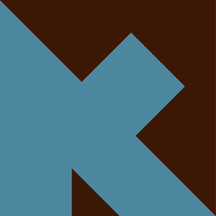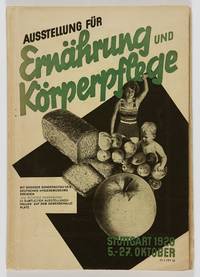first edition Hardcover
1963 · Bratislava
by Kállay, Karol (Photographs); H. Pifko (Ed.); Alojz Riskovic (Design);
Bratislava: Mladé letá, 1963. First edition. Hardcover. Very good+ to near fine condition. 1/5000. Large quarto. Unpaginated. [72]pp. Original off-white cloth with abstract illustration of a human heart on front cover, red lettering on spine, in original photo-illustrated dustjacket, black lettering on spine, red on cover, protected by modern mylar. Photo-illustrated endpapers. "The book is one of the most unusually edited and designed (and also rarest) postwar photo books by Karol Kállay." (Czech and Slovak Photoo-Publications, p. 316)
This rare and poignant photo-essay by Slovak photographer Karol Kállay present seventy-two sheet-fed gravures. Divided into two parts: A selection of photographs showing Bratislava children playing together or walking through a neighborhood under construction in part one, and part two documents the everyday life of surgeons and nurses dedicated to save lives at the Bratislava Children's University Hospital where children are seen undergoing open-heart surgery, while anxious parents wait and hope for a positive outcome.
Text in Czech. Dustjacket lightly rubbed along edges, slightly more pronounced at top of front foredge, and minor chips at tail of spine. Binding age-toned along top and bottom edges. Interior in near fine condition. Karol Kallay (1926-2012) was a citizen of the world, a photographer with blue blood running in his veins, who, in the educational spirit of the First Republic remained a sworn Czechoslovak even after the breakup of Czechoslovakia in 1993. He was born a Hungarian aristocrat, on the 26th of April 1926 in Cadca, in Czechoslovakia’s First Republic where, right from the republic’s beginnings, the use of aristocratic titles - distinguishing those with “blue blood” from the mere mortals - was officially banned. Despite this, his distinction conspicuously radiated out of him all his life. He always wanted to be a photographer. Perhaps it was because at the age of sixteen he won a gold medal in a Slovak photo contest. But it was also thanks to the excellent education he got from his older friends in the Trencin amateur photographic club (Halasa, Hajduch, Farkas), which was one of the many Slovak photographic societies, started after the war, by Jiri Jenicek an officer of the Czechoslovak army and a brilliant and enthusiastic amateur photographer. Kallay’s wise father didn’t want to impede his son’s “comedian career”, as he regarded the photographic profession, but he had one condition - his son had to study something proper first. And so Karol, after the end of the Second World War, studied commercial engineering and law in Bratislava. He worked for a construction company in Zilina and Sucany and in his free time he devoted himself to photo reportage as an associate of a photo weekly Domov and Svet. That brought him to Prague where he meet two eminent photographers: Karel Hajek, the shining star of reportage photography, and Jan Lukas, whose recently published book Zeme a lide not only impressed him but practically predetermined his future photojournalistic direction in the spirit of humanistic photography. “Through Jan Lucas I discovered magazines - "Life," "Paris Match," "Illustrated London News," including fashion magazines such as "Vogue" and "Harper’s Bazaar"; articles and the opinions of the aesthetician Alexander Libermann and the artistic direction of Alexey Brodovitch - it was all important learning for me because we didn’t have that in Slovakia,” he remembers. And so Kallay’s specific bipolarity as an excellent fashion and advertising photographer was basically the source of his income with excellent reporting constantly mapping out the people’s lifestyles that he found on his frequent travels all over the world. Thanks to the Bratislava weekly magazine "Moda," to which he was a regular contributor, he could leave his regular job in 1956 and become a freelance photographer. That opened the way for him to contribute to the most important foreign fashion magazines - mainly "Jardin des Modes" in Paris and "Saison" and "Sybille" in Berlin. And because of this, at home, he became forever known as a successful photographer of fashion who brought the freshness and the dynamism of live photography into his work. In other words: he stopped photographing models as stiff coat hangers. In addition he traveled, published books and did reportages for prestigious magazines such as "Geo," "Stern," "Spiegel," "Focus," "Merian," "Sports International," "Paris Match" and "Illustré," of which at that time the world behind the iron curtain knew practically nothing about. And thanks to this talent Karol Kallay became a photo reporter like none other in Czechoslovakia. (Inventory #: 54664)
This rare and poignant photo-essay by Slovak photographer Karol Kállay present seventy-two sheet-fed gravures. Divided into two parts: A selection of photographs showing Bratislava children playing together or walking through a neighborhood under construction in part one, and part two documents the everyday life of surgeons and nurses dedicated to save lives at the Bratislava Children's University Hospital where children are seen undergoing open-heart surgery, while anxious parents wait and hope for a positive outcome.
Text in Czech. Dustjacket lightly rubbed along edges, slightly more pronounced at top of front foredge, and minor chips at tail of spine. Binding age-toned along top and bottom edges. Interior in near fine condition. Karol Kallay (1926-2012) was a citizen of the world, a photographer with blue blood running in his veins, who, in the educational spirit of the First Republic remained a sworn Czechoslovak even after the breakup of Czechoslovakia in 1993. He was born a Hungarian aristocrat, on the 26th of April 1926 in Cadca, in Czechoslovakia’s First Republic where, right from the republic’s beginnings, the use of aristocratic titles - distinguishing those with “blue blood” from the mere mortals - was officially banned. Despite this, his distinction conspicuously radiated out of him all his life. He always wanted to be a photographer. Perhaps it was because at the age of sixteen he won a gold medal in a Slovak photo contest. But it was also thanks to the excellent education he got from his older friends in the Trencin amateur photographic club (Halasa, Hajduch, Farkas), which was one of the many Slovak photographic societies, started after the war, by Jiri Jenicek an officer of the Czechoslovak army and a brilliant and enthusiastic amateur photographer. Kallay’s wise father didn’t want to impede his son’s “comedian career”, as he regarded the photographic profession, but he had one condition - his son had to study something proper first. And so Karol, after the end of the Second World War, studied commercial engineering and law in Bratislava. He worked for a construction company in Zilina and Sucany and in his free time he devoted himself to photo reportage as an associate of a photo weekly Domov and Svet. That brought him to Prague where he meet two eminent photographers: Karel Hajek, the shining star of reportage photography, and Jan Lukas, whose recently published book Zeme a lide not only impressed him but practically predetermined his future photojournalistic direction in the spirit of humanistic photography. “Through Jan Lucas I discovered magazines - "Life," "Paris Match," "Illustrated London News," including fashion magazines such as "Vogue" and "Harper’s Bazaar"; articles and the opinions of the aesthetician Alexander Libermann and the artistic direction of Alexey Brodovitch - it was all important learning for me because we didn’t have that in Slovakia,” he remembers. And so Kallay’s specific bipolarity as an excellent fashion and advertising photographer was basically the source of his income with excellent reporting constantly mapping out the people’s lifestyles that he found on his frequent travels all over the world. Thanks to the Bratislava weekly magazine "Moda," to which he was a regular contributor, he could leave his regular job in 1956 and become a freelance photographer. That opened the way for him to contribute to the most important foreign fashion magazines - mainly "Jardin des Modes" in Paris and "Saison" and "Sybille" in Berlin. And because of this, at home, he became forever known as a successful photographer of fashion who brought the freshness and the dynamism of live photography into his work. In other words: he stopped photographing models as stiff coat hangers. In addition he traveled, published books and did reportages for prestigious magazines such as "Geo," "Stern," "Spiegel," "Focus," "Merian," "Sports International," "Paris Match" and "Illustré," of which at that time the world behind the iron curtain knew practically nothing about. And thanks to this talent Karol Kallay became a photo reporter like none other in Czechoslovakia. (Inventory #: 54664)











![13 Notebooks of Unpublished Manuscripts by Haim Hazaz [UNIQUE]](https://d3525k1ryd2155.cloudfront.net/h/748/634/1692634748.0.m.jpg)